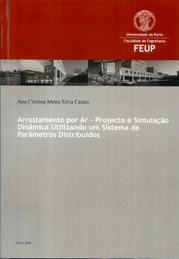In Portugal it is still common to find groundwater contaminated by VOC, specially in areas with intensive industrial activity. The actual European Community legislation on groundwater imposes in medium term the accomplishment of quality patterns concerning these contaminants. Air stripping using columns with random packing is one of the most used technologies.
The description of the main hydraulic features and the mass transfer in the process is relatively well documented. Based on the models previously tested by Castro [Castro, 1997] and on the most recent works published by Billet [Billet, 1995] and Djebbar [Djebbar, 1998], several numerical simulations were made allowing its comparability and the appraisal of the reliability, thus allowing the election of the most adequate for implementation in a computer application. This software was conceived in a Matlab environment and consists in two digital simulation programmes. The first concerns the simulation of the behaviour of a column in steady-state and the second refers to the design of a column achieving a pre-defined rate of removal. The validation of the results was done using either data published by Hand [Hand, 1986] colleted in pilot and industrial operations or data produced in a small pilot installation that was specially built for this research.
The most appropriate pressure drop and mass transfer models were combined for incorporation in a phenomenological model describing this transfer process, both in steady and transient state. This model consists in a system of 1st order partial differential equations of the hyperbolic type, which are non-linear in its less restrictive form, with two independent variables: a longitudinal space variable (the radial dispersion was neglected) and time. The steady state assumes the form of a system of two ordinary differential equations. The determination of a unique solution depends on fixing the values for some parameters, on the characterization of a reference state (initial conditions) and on the definition of the boundary conditions.
The system of PDE can not be solved by any of the most vulgar programmes used to numerically integrate this type of equations (as, for instance, the PDE Toolbox in Matlab and the set of routines designated by PDECOL for usage in Fortran programming). Thus specific algorithms and strategies were developed in Matlab environment. The initial conditions or the primitive steady-state was calculated solving a system of ODE by the Explicit Euler method, although the analytical solution is easily obtained. However, the numerical implementation of an algorithm for solving the PDE system by finite differences caused new problems. The boundary conditions are located in opposite extremities of the space, compelling the usage of ascending differences for the concentrations in the liquid phase and descending differences for the concentration in the gaseous phase. This location of the boundary conditions does not allow the usage of explicit methods and for this reason the implicit method was used. Nevertheless, they have the advantage of generating errors smaller than those arising from the explicit methods. But they also present the notorious disadvantage of an intensive usage of the memory. In this case if we have n intervals in time and m intervals in space, n.m space-time cells are generated, and for each it is necessary to solve a system two difference equations. As total we have to solve a system with 2.m.n equations in relation to 2.m.n. unknowns. This implies the creation of a matrix with (2mn)^2 elements and 2mn independent terms. The adopted solution was the usage of sparse matrixes.
